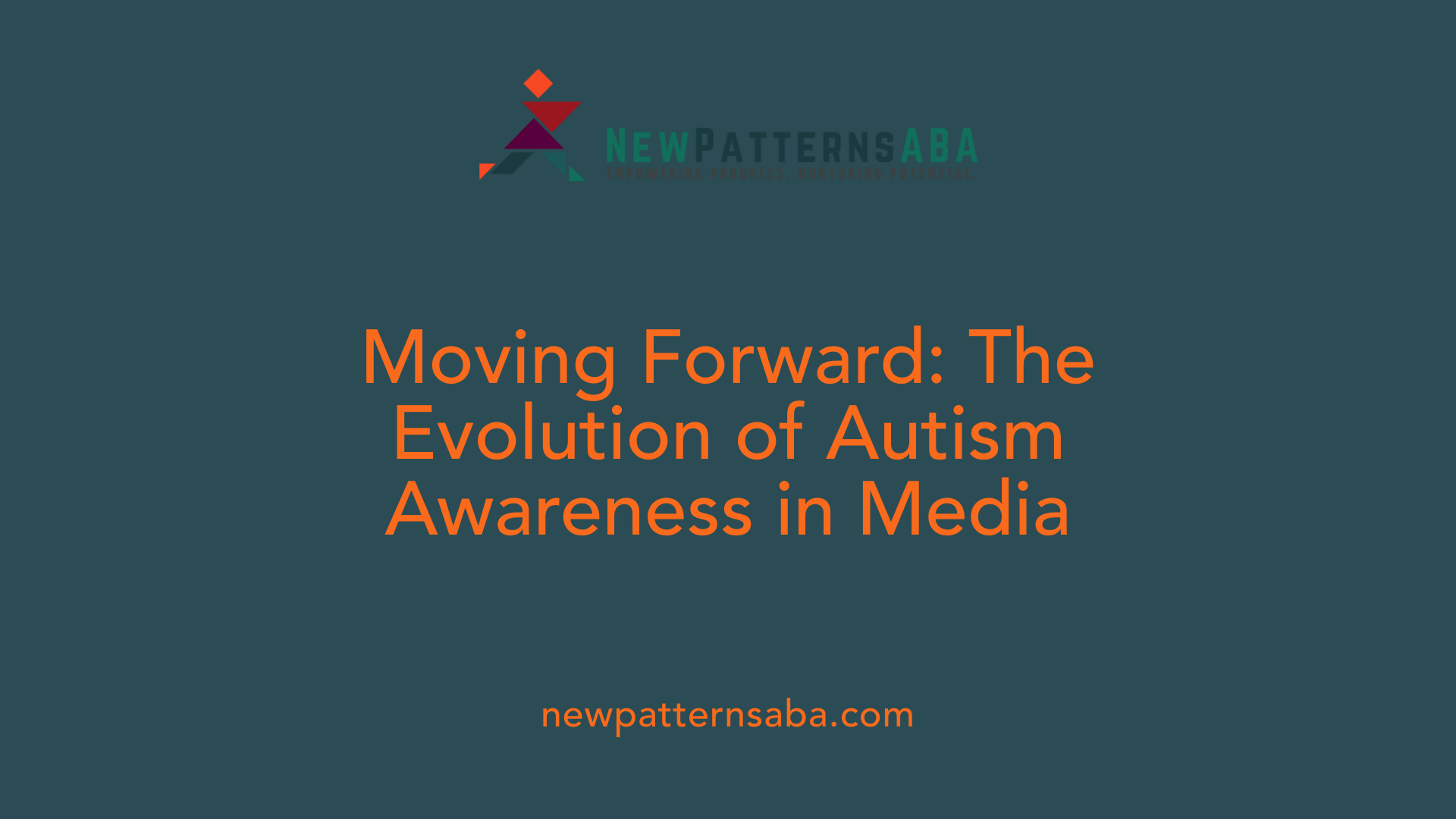Understanding Autism and Its Portrayal in Media
The question of whether Tom Cruise is autistic has been a topic of speculation among fans and media observers alike. To explore this, we must differentiate between verified information and popular misconceptions, while also examining the broader context of autism representation within entertainment. This article delves into the portrayal of autism in films, the influence of iconic characters, and the lack of credible evidence linking Cruise to this condition, guiding readers through the facts and myths surrounding this intriguing question.
Autism in Media: The Role of 'Rain Man' and Its Impact
How has the portrayal of autism in film, especially 'Rain Man', influenced public understanding?
The film 'Rain Man', released in 1988 and directed by Barry Levinson, remains one of the most influential movies in shaping public perceptions of autism. It stars Dustin Hoffman as Raymond Babbitt, an autistic savant with extraordinary memory and calculation abilities, and Tom Cruise as his brother Charlie.
'Rain Man' was groundbreaking for bringing attention to autism spectrum disorder to a broad audience. Its depiction of Raymond's behaviors—such as repetition, intense focus, and extraordinary skills—highlighted the unique challenges and gifts associated with autism.
While the film was successful both critically and commercially, winning multiple Oscars including Best Picture and Best Actor, it also faced criticism. Some argued it perpetuated stereotypes of autistic savants—implying that all autistic individuals possess exceptional abilities, which is not representative of most on the spectrum. Nevertheless, its portrayal was seen as nuanced and realistic enough to deepen understanding, especially at a time when autism was poorly understood publicly.
Influence of Dustin Hoffman's performance
Dustin Hoffman’s portrayal of Raymond was highly acclaimed for its depth and authenticity. Hoffman’s extensive research and commitment to understanding autism, including studies into the condition and interactions with autistic individuals, contributed to a performance that many viewers found compelling.
Hoffman’s depiction included Raymond's repetitive behaviors, difficulty with social interactions, and extraordinary memory. These traits helped to shed light on how autism can manifest in diverse ways, but also contributed to stereotypes that some critics later sought to correct.
Impact on public perception of autism
Following the success of 'Rain Man', awareness and curiosity about autism soared. It prompted increased funding for research and educational programs, and sparked a wave of awareness campaigns.
However, the film also influenced misconceptions. For example, it reinforced the idea that all autistic people have savant abilities—a notion that can be misleading. In recent years, the portrayal of autism in media has evolved. More works by autistic creators now emphasize the diversity of experiences, moving away from the limited representation seen in 'Rain Man'.
Broader cultural significance
Overall, 'Rain Man' played a pivotal role in bringing autism into mainstream discourse. Its impact can be summarized in a comparative table below:
| Aspect | Description | Further Details |
|---|---|---|
| Initial Impact | Raised awareness of autism spectrum disorder | Increased research funding and public interest |
| Stereotypes | Reinforced the savant myth for many viewers | Led to misconceptions about autistic abilities |
| Authenticity | Performance praised but simplified autism traits | Inspired future, more nuanced portrayals |
| Cultural Recognition | Recognized as one of the most influential movies of the 1980s | Won multiple awards and remains culturally significant |
| Media Evolution | Shift toward diverse, accurate portrayals by autistic individuals | Moving beyond 'Rain Man' stereotypes |
In conclusion, while the film's depiction contributed positively to awareness, it also set the stage for ongoing conversations about how autism should be represented in media. Today, there is a better understanding of the spectrum's diversity, with 'Rain Man' serving as both a milestone and a cautionary tale in autistic portrayals.
The Portrayal of Autism in Films and the Role of Celebrity Actors

How is autism generally portrayed in movies, and has Tom Cruise been involved in such portrayals?
Autism has been depicted in films in a variety of ways, reflecting the complexity and diversity of the condition. Classic movies like Rain Man (1988), starring Tom Cruise and Dustin Hoffman, introduced audiences to an autistic savant, Raymond Babbitt, whose extraordinary memory and calculation skills highlighted a specific aspect of autism.
In Rain Man, Raymond's character showcased remarkable abilities such as memorization and rapid calculations, which contributed to the misconception that all autistic individuals possess savant skills. The film also depicted Raymond's repetitive behaviors and communication challenges, providing a nuanced view of some autistic traits.
Beyond Rain Man, other films and documentaries explore autism through different lenses. For example, Temple Grandin portrays the life of Temple Grandin herself, emphasizing her visual thinking and unique approach to understanding the world. The Reason I Jump and Life Animated are documentaries that shed light on the personal experiences of autistic individuals, aiming to promote understanding and acceptance.
While Tom Cruise’s role in Rain Man is iconic, he has not directly portrayed an autistic character outside of this film. His involvement in Rain Man helped bring awareness to autism, but he was not an autism advocate or actor with autism himself. Dustin Hoffman's performance, shaped by research into autism and savant syndrome, remains a standout portrayal.
Modern representations of autism are increasingly striving for authenticity, focusing on the individual experiences beyond stereotypes. Films like As We See It and The A Word aim to showcase the diversity of autistic lives, including those without savant abilities.
Overall, movies continue to evolve in their depiction of autism, moving toward more accurate and respectful portrayals. This progress is essential in fostering greater public understanding and supporting the push for greater inclusion and representation in media.
Separating Fact from Fiction: Tom Cruise’s Health and Neurological Conditions

What is the difference between verified information and speculation about Tom Cruise’s health or neurological conditions?
There is a clear distinction between facts that are verified by credible sources and rumors or speculation that circulate without official confirmation. As of now, there has been no public disclosure from Tom Cruise or authoritative medical sources confirming any specific health or neurological diagnoses.
Cruise is well-known for his active lifestyle, which includes regular fitness routines such as resistance training and cardio exercises. These activities support his physical health, but they do not provide any concrete evidence about his neurological status.
Many claims about Cruise having autism or other neurological conditions are unsubstantiated. They are based on rumors, social media speculation, or misinterpretations of publicly available information. These unverified claims can easily circulate and become widely accepted despite lacking credible confirmation.
The key difference lies in the source and reliability of the information. Verified information is provided or confirmed by trusted health professionals, official statements, or credible publications. In contrast, speculation relies on conjecture, incomplete data, or unverified reports. Without official disclosure, it is impossible to confirm or deny any specific health conditions.
Therefore, until Tom Cruise or a credible medical authority makes an official statement regarding his health, any assumptions about his neurological condition should be viewed with skepticism. The responsible approach is to recognize the limits of publicly available information and to avoid spreading unverified claims.
The role of media speculation and its potential inaccuracies
Media outlets and social media platforms often amplify rumors related to celebrities’ health. In Cruise’s case, many theories have emerged, including claims of autism or other conditions, often based on interpretations of his behaviors or public appearances.
While media coverage can raise awareness, it can also lead to misinformation. Without official confirmation, these reports remain speculative. Sometimes, media may sensationalize information to attract attention, which can distort reality and perpetuate misconceptions.
Inaccuracies can have consequences, including unwarranted privacy invasions or undue concern from fans and the public. It is essential to approach such reports critically, relying on reputable sources for information.
In summary, distinguishing verified facts from rumors about Tom Cruise’s health involves scrutinizing the credibility of sources and recognizing the absence of official disclosures. Until credible sources confirm any neurological or health condition, what is known remains speculative.
The Reality of Rumors: Has Tom Cruise Ever Been Diagnosed as Autistic?

Lack of official diagnosis or medical documentation
There is no publicly available verified information suggesting that Tom Cruise is autistic. The speculation or rumors about his neurological status are not backed by any official medical records or credible statements from Cruise himself or qualified professionals.
The misconceptions may stem from his portrayal of Raymond Babbitt in the film Rain Man, where Cruise’s character interacts with Dustin Hoffman’s autistic savant character. However, these are creative roles and do not reflect the actor’s own health status.
Importance of credible evidence and official statements
When discussing autism, or any health condition, relying on official diagnoses and credible sources is crucial. Without such evidence, claims remain unsubstantiated.
Celebrities and public figures often face scrutiny and rumors, but it's essential to differentiate between fictional portrayals and personal health disclosures. In the case of Tom Cruise, no official or medical documentation confirms an autism diagnosis.
Understanding how rumors can arise without factual basis
Rumors about Tom Cruise's autism may originate from misunderstandings or media influence, especially considering the significant impact of the Rain Man film. The portrayal of Raymond Babbitt has encouraged some to associate Cruise with autism, but this is a misconception.
Fascination with celebrities often leads fans and the media to speculate about personal health matters, but such speculation can spread misinformation. Without verified evidence, these rumors remain just that—rumors.
| Topic | Details | Source / Evidence |
|---|---|---|
| No publicly confirmed diagnosis | No official statements or medical records support autism diagnosis for Tom Cruise | Public records, credible interviews |
| Impact of Rain Man portrayal | Role inspired awareness but not personal health status | Film analysis, actor interviews |
| Importance of verified information | Prevents spread of misinformation | Medical ethics, media standards |
In conclusion, claims that Tom Cruise is autistic have no verified basis. The conversation around this topic should focus on respecting individual privacy and relying on facts.
Exploring the Facts and Myths Surrounding Tom Cruise’s Potential Autism
What are the facts and rumors surrounding Tom Cruise's potential autism?
There has been much speculation about Tom Cruise potentially being on the autism spectrum. However, it is essential to emphasize that there are no verified or official medical reports confirming this. The rumors largely originate from online sources and social media chatter rather than proven evidence.
Tom Cruise is well-known for his intense focus and dedication to his acting career. He is also a prominent member of the Church of Scientology, which has historically been associated with privacy regarding personal health and medical information. This privacy means that any reports or rumors about his health are mostly unsubstantiated.
It is common for fans and media to speculate about the personal lives of celebrities, especially regarding neurological or psychological conditions. However, in the absence of credible evidence or official statements, these rumors remain unconfirmed.
Moreover, the topic of autism is complex and deeply personal. Diagnosing someone without their consent or proper medical evaluation is both inappropriate and unreliable. Respecting individual privacy and avoiding unwarranted assumptions are crucial.
In summary, while there are circulating rumors and online discussions suggesting Tom Cruise might be on the autism spectrum, no credible sources or medical professionals have verified these claims. Therefore, any such assertions should be treated with caution and understanding of the importance of respecting personal privacy.
Why is credible information important?
Credible sources, such as medical professionals and verified public statements, provide reliable information. They ensure that discussions about health and neurological conditions are respectful and accurate.
Without official confirmation, speculations about celebrities like Tom Cruise can contribute to misinformation and misconceptions. Respect for personal privacy and adherence to verified facts are essential in discussing individual health conditions.
How does this compare with the public perception of autism?
Many public figures, including historically significant individuals like Albert Einstein and Temple Grandin, have been discussed in relation to autism based on retrospective analyses or their behaviors.
However, it is crucial to differentiate between educated guesses and confirmed diagnoses. Using figures like Einstein or Grandin to understand autism can be informative, but it does not imply that other individuals, including celebrities, share the same hidden diagnoses.
Ultimately, understanding autism requires a nuanced approach grounded in verified data rather than speculation.
| Aspect | Details | Note |
|---|---|---|
| Verified Diagnoses | No confirmed reports about Tom Cruise | Respectful and privacy-focused approach |
| Rumors | Circulate online without credible evidence | Often fueled by media sensationalism |
| Public Perception | Influenced by speculation and cultural stereotypes | Not based on confirmed facts |
| Responsible Discussion | Rely on official statements and medical evaluations | Ensures respectful and accurate conversation |
This comprehensive view helps distinguish factual information from unfounded rumors, promoting a respectful and informed perspective on discussions around autism and public figures.
Additional Insights: The Influence of Excelling Personalities and How They Shape Our Understanding of Autism

How Personalities like Albert Einstein, Temple Grandin, and Oliver Sacks Have Impacted Autism Perception
Many renowned figures in science, psychology, and art have been posthumously or openly diagnosed with traits associated with autism. Albert Einstein, often cited as a visual thinker, used external tools such as music and imagery to develop his groundbreaking theories. Retrospective analyses suggest he was likely on the autism spectrum, characterized by a profound capacity for visual thinking and intense focus.
Temple Grandin, a prominent animal scientist and autism advocate, explains that what are often perceived as savant skills—extraordinary memory, calculation, or visualization abilities—are linked to deep concentration and intense mental imagery. She emphasizes that her own achievements are rooted in her ability to visualize problems in great detail, reflecting how some individuals with autism excel in specific cognitive areas.
Oliver Sacks, the famous neurologist and author, documented cases of individuals with exceptional sensory perception and visualization skills. His work shed light on how the strengths often found in those with autism can manifest as extraordinary talents, fostering a more nuanced view of neurodiversity.
Their Contributions to Understanding Autism
These figures collectively demonstrate that autism is not solely a disorder but also a spectrum of diverse neurological profiles. Einstein's reliance on visual imagery showcases how different thinking styles contribute to innovation. Grandin's advocacy for understanding sensory experiences highlights the importance of recognizing individual strengths.
Sacks' writings have helped destigmatize the condition by illustrating that neurological differences can lead to remarkable talents. Through their stories, the public gains insight into the vast potential within autistic individuals, moving beyond stereotypes.
Visual Thinking and Focus as Roots of Savant Skills
Savant skills—such as extraordinary memory, calculation, or artistic talent—are often linked with intense visual focus and concentration. This is vividly illustrated by Raymond in the film "Rain Man," who exhibits exceptional calculation skills rooted in strong visualization. Temple Grandin’s descriptions affirm that visualization, combined with fixation on specific tasks, fosters skill development.
Albert Einstein's imagined scenario of riding a beam of light is a classic example of how visual imagery fuels complex theories. Such mental processes involve imagining scenarios vividly, enabling abstract reasoning and problem solving.
Research suggests that this intense focus and vivid visualization activate particular neural pathways, allowing some individuals with autism to excel in specific domains. This capacity for
Concluding Remarks: The Broader Context of Autism Awareness and Representation

Evolution of autism awareness in media
Over the past few decades, media portrayals of autism have played a pivotal role in shaping public understanding. Early representations often relied on stereotypes, emphasizing savant skills or depicting autistic characters as solely defined by their challenges. Films like "Rain Man" (1988), directed by Barry Levinson, marked a turning point by bringing visibility to autistic savants through the character of Raymond, portrayed convincingly by Dustin Hoffman.
This film not only garnered critical acclaim, winning several Oscars including Best Picture and Best Actor, but also significantly increased awareness about autism. Its impact extended beyond entertainment, influencing research funding and societal discussions. However, while "Rain Man" helped make autism more visible, it also led to misconceptions, particularly the idea that all autistic individuals possess extraordinary savant abilities.
In recent years, media has started to evolve towards more nuanced and authentic portrayals. Stories now often explore the diverse experiences within the autism spectrum, emphasizing individual differences rather than a one-size-fits-all narrative. This shift helps foster greater understanding and empathy.
The importance of nuanced, authentic portrayals
Authentic representation is vital in portraying autism as a spectrum of experiences, not just a set of stereotypes. Figures like Temple Grandin have emphasized that savant skills involve intense visualization and concentration, which broadens the common perception of what autism entails.
Personal accounts, such as those shared by Claudia Mazzucco—who regards herself as a savant and thinks visually rather than verbally—contribute valuable perspectives. She highlights her mild echolalia and her way of thinking in pictures, aligning with Einstein’s retrospective diagnosis as a visual thinker. Mazzucco’s reflections underscore the importance of showcasing diverse cognitive styles and talents within the autistic community.
Moreover, films and documentaries that depict real-life figures like Mazzucco, Einstein, Grandin, and Sacks offer nuanced insights. They help dispel myths, challenge stereotypes, and promote acceptance. As society becomes more informed, stories that depict a broad spectrum of autistic experiences facilitate a more inclusive and accurate understanding.
Respect for personal privacy and medical confidentiality
While featuring personal stories and public figures can enhance awareness, it is equally important to respect individuals’ privacy and medical confidentiality. Sharing detailed personal experiences must be done with consent and sensitivity.
Respecting privacy encourages truthful and respectful portrayals without sensationalism or exploitation. Autistic individuals, like Mazzucco, often choose to share their journeys to educate others, emphasizing that their stories are personal and deserving of respect.
In conclusion, the evolution of autism awareness in media—from stereotypical portrayals to authentic stories—reflects societal progress. It underscores the importance of respecting individual identities and fostering a more understanding, inclusive world for autistic individuals.
| Aspect | Historical Perspective | Current Trends | Examples & Influences |
|---|---|---|---|
| Media Portrayals | Stereotypes, limited | Nuanced, diverse | "Rain Man," documentaries, personal stories |
| Impact | Awareness rise, misconceptions | Empathy, acceptance | Einstein as a visual thinker, Mazzucco’s insights |
| Respect & Ethics | Privacy concerns | Consent and sensitivity | Personal narratives, public figures |
This ongoing evolution demonstrates how media can educate, challenge stereotypes, and promote empathy, ultimately transforming societal attitudes toward autism.
Seeking Clarity Amidst Speculation
In conclusion, the question of whether Tom Cruise is autistic remains unanswered by credible sources, and no official diagnosis has been disclosed. The prominent role he played in Rain Man has forever linked him to a landmark portrayal of autism in cinema, which significantly increased public awareness and understanding. However, it is crucial to differentiate between fictional representations, celebrity portrayals, and verified personal information. As society progresses toward more nuanced and authentic depictions of autism, respecting individuals' privacy and emphasizing credible evidence are paramount. For now, Tom Cruise’s neurological status remains a matter of speculation, and any claims beyond verified facts should be approached with caution and respect.
References
- Tom Cruise, Albert Einstein, Temple Grandin, and Oliver Sacks
- Rain Man - Wikipedia
- Rain Man (1988) - Review Flow - Into Film
- Rain Man - Wikipedia
- How Tom Cruise's Relentless Workout Routine Keeps Him Stunt ...
- Autism in Movies and TV Shows: What to Know Before Watching
- List of films about autism - Wikipedia





